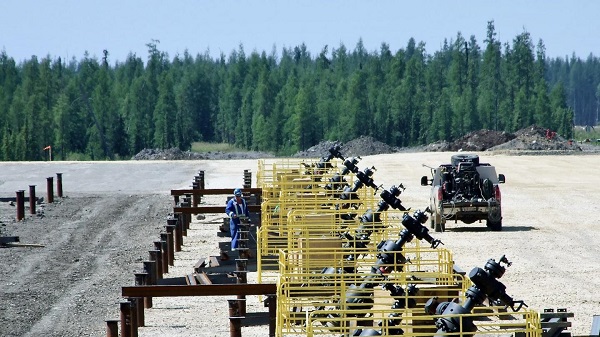Economy
The people will reject the globalist ‘climate’ agenda
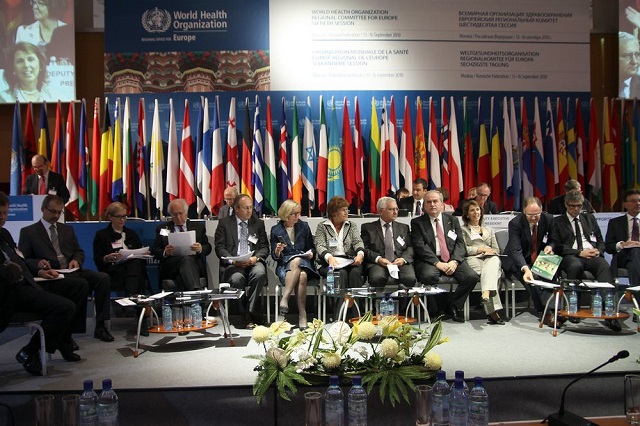
From the Fraser Institute
” representatives of governments worldwide endorsed policies that will, if implemented, do extraordinary harm to their own people. Where governments have made even small attempts to take these radical steps, the public has revolted. This calls into question whom the COP28 delegates “represent.” “
It’s tempting to dismiss the outcome of COP28, the recent United Nations climate change conference in the United Arab Emirates, as mere verbiage, such as the “historic” UAE Consensus about transitioning away from fossil fuels. After all, this is the 28th such conference and the previous ones all pretty much came to nothing. On a chart showing the steady rise in global total CO2 emissions since 1950 you cannot spot when the 1997 Kyoto Protocol entered into force (2002), with its supposedly historic language binding developed countries to cap their CO2 emissions at five per cent below 1990 levels by 2012. Likewise, the 2015 Paris Agreement contained historic language binding countries to further deep emission reductions, yet the COP28 declaration begins (paragraph I.2) with an admission that the parties are not complying.
Nonetheless we should not overlook the real meaning of the UAE Consensus. COP agreements used to focus on one thing—targets for reducing greenhouse gases. The UAE Consensus is very different. Across its 196 paragraphs and 10 supplementary declarations it’s a manifesto of global central planning. Some 90,000 government functionaries aspire, in their own words, to oversee and micromanage agriculture, finance, energy, manufacturing, gender relations, health care, air conditioning, building design, and countless other economic and social decisions. It’s supposedly in the name of fighting climate change, but that’s just the pretext. Take it away and they’d appeal to something else.
After all, the climate change issue doesn’t necessitate these plans. Economists have been studying climate change for many decades and have never considered it grounds to phase out fossil fuels, micromanage society, etc. Mainstream scientific findings, coupled with mainstream economic analysis, prescribes moderate emission-pricing policies that rely much more on adaptation than mitigation.
The fact that the UAE Consensus is currently non-binding is beside the point. What matters is what the COP28 delegates said they want to achieve. Two facts stand out—the final consensus document announced plans that would cause enormous economic harm if implemented, and it was unanimously approved by everyone in the room.
The first point is best illustrated by the language around eliminating fossil fuels. Climate policy is supposed to be about optimally reducing greenhouse gas (GHG) emissions. As technology develops to decouple emissions from fuel use, there may eventually be no need to reduce the latter, but activist delegates insisted on the language anyway, making it an end in itself. Fossil fuels are essential for our economic standard of living, and 30 years of economic analysis has consistently shown that despite GHG emissions, phasing them out would do far more harm than good to humanity. Yet the Consensus statement ignored that, even while claiming to be guided by “the science.”
The second point refers to the fact that representatives of governments worldwide endorsed policies that will, if implemented, do extraordinary harm to their own people. Where governments have made even small attempts to take these radical steps, the public has revolted. This calls into question whom the COP28 delegates “represent.” Other than a few elected officials, we didn’t vote for any of them. And even if some heads of state go to a COP meeting intending to oppose the overall agenda, they would not be able to stop it and would be browbeaten into signing the final package.
The UAE Consensus is the latest signal that the real fault line in contemporary society is not right versus left, it’s the people versus (for lack of a better word) the globalists. A decade ago this term was only heard on the conspiracy fringe but has since migrated towards the mainstream as the most apt descriptor of an enormous and influential transnational permanent bureaucracy, which aspires to run everything, even to the public’s detriment, while insulating themselves from democratic limits.
A hallmark of globalists is the way they exempt themselves from rules they want to impose on everyone else. COP28 and Davos meetings perfectly illustrate this—thousands of delegates flying in, many on private jets, to be wined and dined while telling everyone else to learn to do without.
In the cases of both COVID-19 and climate change, the same elite has proven itself to be adept, not at using science to support good decision-making, but at invoking “the science” as a talisman to justify everything they do including censoring public debate. Complex and uncertain matters get reduced to dogmatic slogans by technocrats who ensure political leaders are force fed a narrow one-sided information stream. Experts outside the process are accorded standing based solely on their obeisance to the preferred narrative, not their knowledge or qualifications. Critics are attacked as purveyors of “misinformation” and “disinformation,” and so the existence of opposition to government plans becomes proof of the need to suppress free speech.
But eventually the people get the last word. I am struck, in this context, that despite nonstop fearmongering about an alleged climate crisis, the public tolerates climate policy only insofar as it doesn’t cost anything.
The climate movement might think that by embedding itself in the globalist elite it can accelerate policy adoption without needing to win elections. I think the opposite is happening. The globalists have coopted the climate issue to sell a grotesque central planning agenda that the public has repeatedly rejected. If the UAE Consensus is the future of climate policy, its failure is guaranteed.
Author:
It’s tempting to dismiss the outcome of COP28, the recent United Nations climate change conference in the United Arab Emirates, as mere verbiage, such as the “historic” UAE Consensus about transitioning away from fossil fuels. After all, this is the 28th such conference and the previous ones all pretty much came to nothing. On a chart showing the steady rise in global total CO2 emissions since 1950 you cannot spot when the 1997 Kyoto Protocol entered into force (2002), with its supposedly historic language binding developed countries to cap their CO2 emissions at five per cent below 1990 levels by 2012. Likewise, the 2015 Paris Agreement contained historic language binding countries to further deep emission reductions, yet the COP28 declaration begins (paragraph I.2) with an admission that the parties are not complying.
Nonetheless we should not overlook the real meaning of the UAE Consensus. COP agreements used to focus on one thing—targets for reducing greenhouse gases. The UAE Consensus is very different. Across its 196 paragraphs and 10 supplementary declarations it’s a manifesto of global central planning. Some 90,000 government functionaries aspire, in their own words, to oversee and micromanage agriculture, finance, energy, manufacturing, gender relations, health care, air conditioning, building design, and countless other economic and social decisions. It’s supposedly in the name of fighting climate change, but that’s just the pretext. Take it away and they’d appeal to something else.
After all, the climate change issue doesn’t necessitate these plans. Economists have been studying climate change for many decades and have never considered it grounds to phase out fossil fuels, micromanage society, etc. Mainstream scientific findings, coupled with mainstream economic analysis, prescribes moderate emission-pricing policies that rely much more on adaptation than mitigation.
The fact that the UAE Consensus is currently non-binding is beside the point. What matters is what the COP28 delegates said they want to achieve. Two facts stand out—the final consensus document announced plans that would cause enormous economic harm if implemented, and it was unanimously approved by everyone in the room.
The first point is best illustrated by the language around eliminating fossil fuels. Climate policy is supposed to be about optimally reducing greenhouse gas (GHG) emissions. As technology develops to decouple emissions from fuel use, there may eventually be no need to reduce the latter, but activist delegates insisted on the language anyway, making it an end in itself. Fossil fuels are essential for our economic standard of living, and 30 years of economic analysis has consistently shown that despite GHG emissions, phasing them out would do far more harm than good to humanity. Yet the Consensus statement ignored that, even while claiming to be guided by “the science.”
The second point refers to the fact that representatives of governments worldwide endorsed policies that will, if implemented, do extraordinary harm to their own people. Where governments have made even small attempts to take these radical steps, the public has revolted. This calls into question whom the COP28 delegates “represent.” Other than a few elected officials, we didn’t vote for any of them. And even if some heads of state go to a COP meeting intending to oppose the overall agenda, they would not be able to stop it and would be browbeaten into signing the final package.
The UAE Consensus is the latest signal that the real fault line in contemporary society is not right versus left, it’s the people versus (for lack of a better word) the globalists. A decade ago this term was only heard on the conspiracy fringe but has since migrated towards the mainstream as the most apt descriptor of an enormous and influential transnational permanent bureaucracy, which aspires to run everything, even to the public’s detriment, while insulating themselves from democratic limits.
A hallmark of globalists is the way they exempt themselves from rules they want to impose on everyone else. COP28 and Davos meetings perfectly illustrate this—thousands of delegates flying in, many on private jets, to be wined and dined while telling everyone else to learn to do without.
In the cases of both COVID-19 and climate change, the same elite has proven itself to be adept, not at using science to support good decision-making, but at invoking “the science” as a talisman to justify everything they do including censoring public debate. Complex and uncertain matters get reduced to dogmatic slogans by technocrats who ensure political leaders are force fed a narrow one-sided information stream. Experts outside the process are accorded standing based solely on their obeisance to the preferred narrative, not their knowledge or qualifications. Critics are attacked as purveyors of “misinformation” and “disinformation,” and so the existence of opposition to government plans becomes proof of the need to suppress free speech.
But eventually the people get the last word. I am struck, in this context, that despite nonstop fearmongering about an alleged climate crisis, the public tolerates climate policy only insofar as it doesn’t cost anything.
The climate movement might think that by embedding itself in the globalist elite it can accelerate policy adoption without needing to win elections. I think the opposite is happening. The globalists have coopted the climate issue to sell a grotesque central planning agenda that the public has repeatedly rejected. If the UAE Consensus is the future of climate policy, its failure is guaranteed.
Author:
Business
Canada’s combative trade tactics are backfiring

This article supplied by Troy Media.
Defiant messaging may play well at home, but abroad it fuels mistrust, higher tariffs and a steady erosion of Canada’s agri-food exports
The real threat to Canadian exporters isn’t U.S. President Donald Trump’s tariffs, it’s Ottawa and Queen’s Park’s reckless diplomacy.
The latest tariff hike, whether triggered by Ontario’s anti-tariff ad campaign or not, is only a symptom. The deeper problem is Canada’s escalating loss of credibility at the trade table. Washington’s move to raise duties from 35 per cent to 45 per cent on nonCUSMA imports (goods not covered under the Canada-United States-Mexico Agreement, the successor to NAFTA) reflects a diplomatic climate that is quickly souring, with very real consequences for Canadian exporters.
Some analysts argue that a 10-point tariff increase is inconsequential. It is not. The issue isn’t just what is being tariffed; it is the tone of the relationship. Canada is increasingly seen as erratic and reactive, negotiating from emotion rather than strategy. That kind of reputation is dangerous when dealing with the U.S., which remains Canada’s most important trade partner by a wide margin.
Ontario Premier Doug Ford’s stand up to America messaging, complete with a nostalgic Ronald Reagan cameo, may have been rooted in genuine conviction. Many Canadians share his instinct to defend the country’s interests with bold language. But in diplomacy, tone often outweighs intent. What plays well domestically can sound defiant abroad, and the consequences are already being felt in boardrooms and warehouses across the country.
Ford’s public criticisms of companies such as Crown Royal, accused of abandoning Ontario, and Stellantis, which recently announced it will shift production of its Jeep Compass from Brampton to Illinois as part of a US$13 billion U.S. investment, may appeal to voters who like to see politicians get tough. But those theatrics reinforce the impression that Canada is hostile to
international investors. At a time when global capital can move freely, that perception is damaging. Collaboration, not confrontation, is what’s needed most to secure investment in Canada’s economy.
Such rhetoric fuels uncertainty on both sides of the border. The results are clear: higher tariffs, weaker investor confidence and American partners quietly pivoting away from Canadian suppliers.
Many Canadian food exporters are already losing U.S. accounts, not because of trade rules but because of eroding trust. Executives in the agri-food sector are beginning to wonder whether Canada can still be counted on as a reliable partner, and some have already shifted contracts southward.
Ford’s political campaigns may win applause locally, but Washington’s retaliatory measures do not distinguish between provinces. They hit all exporters, including Canada’s food manufacturers that rely heavily on the U.S. market, which purchases more than half of Canada’s agri-food exports. That means farmers, processors and transportation companies across the country are caught in the crossfire.
Those who believe the new 45 per cent rate will have little effect are mistaken. Some Canadian importers now face steeper duties than competitors in Vietnam, Laos or even Myanmar. And while tariffs matter, perception matters more. Right now, the optics for Canada’s agri-food sector are poor, and once confidence is lost, it is difficult to regain.
While many Canadians dismiss Trump as unpredictable, the deeper question is what happened to Canada’s once-cohesive Team Canada approach to trade. The agri-food industry depends on stability and predictability. Alienating our largest customer, representing 34 per cent of the global consumer market and millions of Canadian jobs tied to trade, is not just short-sighted, it’s economically reckless.
There is no trade war. What we are witnessing is an American recalibration of domestic fiscal policy with global consequences. Canada must adapt with prudence, not posturing.
The lesson is simple: reckless rhetoric is costing Canada far more than tariffs. It’s time to change course, especially at Queen’s Park.
Dr. Sylvain Charlebois is a Canadian professor and researcher in food distribution and policy. He is senior director of the Agri-Food Analytics Lab at Dalhousie University and co-host of The Food Professor Podcast. He is frequently cited in the media for his insights on food prices, agricultural trends, and the global food supply chain
Troy Media empowers Canadian community news outlets by providing independent, insightful analysis and commentary. Our mission is to support local media in helping Canadians stay informed and engaged by delivering reliable content that strengthens community connections and deepens understanding across the country
Business
Trans Mountain executive says it’s time to fix the system, expand access, and think like a nation builder
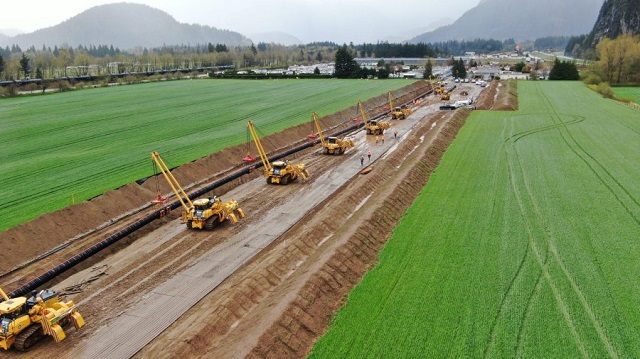
Mike Davies calls for ambition and reform to build a stronger Canada
A shift in ambition
A year after the Trans Mountain Expansion Project came into service, Mike Davies, President and Chief Operating Officer at Trans Mountain, told the B.C. Business Summit 2025 that the project’s success should mark the beginning of a new national mindset — one defined by ambition, reform, and nation building.
“It took fifteen years to get this version of the project built,” Davies said. “During that time, Canadian producers lost about $50 billion in value because they were selling into a discounted market. We have some of the world’s largest reserves of oil and gas, but we can only trade with one other country. That’s unusual.”
With the expansion now in operation, that imbalance is shifting. “The differential on Canadian oil has narrowed by about $13 billion,” he said. “That’s value that used to be extracted by the United States and now stays in Canada — supporting healthcare, reconciliation, and energy transformation. About $5 billion of that is in royalties and taxes. It’s meaningful for us as a society.”
Davies rejected the notion that Trans Mountain was a public subsidy. “The federal government lent its balance sheet so that nation-building infrastructure could get built,” he said. “In our first full year of operation, we’ll return more than $1.3 billion to the federal government, rising toward $2 billion annually as cleanup work wraps up.”
At the Westridge Marine Terminal, shipments have increased from one tanker a week to nearly one a day, with more than half heading to Asia. “California remains an important market,” Davies said, “but diversification is finally happening — and it’s vital to our long-term prosperity.”
Fixing the system to move forward
Davies said this moment of success should prompt a broader rethinking of how Canada approaches resource development. “We’re positioned to take advantage of this moment,” he said. “Public attitudes are shifting. Canadians increasingly recognize that our natural resource advantages are a strength, not a liability. The question now is whether governments can seize it — and whether we’ll see that reflected in policy.”
He called for “deep, long-term reform” to restore scalability and investment confidence. “Linear infrastructure like pipelines requires billions in at-risk capital before a single certificate is issued,” he said. “Canada has a process for everything — we’re a responsible country — but it doesn’t scale for nation-building projects.”
Regulatory reform, he added, must go hand in hand with advancing economic reconciliation. “The challenge of our generation is shifting Indigenous communities from dependence to participation,” he said. “That means real ownership, partnership, and revenue opportunities.”
Davies urged renewed cooperation between Alberta and British Columbia, calling for “interprovincial harmony” on West Coast access. “I’d like to see Alberta see B.C. as part of its constituency,” he said. “And I’d like to see B.C. recognize the need for access.”
He summarized the path forward in plain terms: “We need to stem the exit of capital, create an environment that attracts investment, simplify approvals to one major process, and move decisions from the courts to clear legislation. If we do that, we can finally move from being a market hostage to being a competitor — and a nation builder.”
-

 Business11 hours ago
Business11 hours agoTrans Mountain executive says it’s time to fix the system, expand access, and think like a nation builder
-

 Business1 day ago
Business1 day agoThe painful return of food inflation exposes Canada’s trade failures
-

 Business1 day ago
Business1 day agoCBC uses tax dollars to hire more bureaucrats, fewer journalists
-

 Sports2 days ago
Sports2 days agoWhile Ohtani marches into MLB history, Nippon league’s shame lingers
-
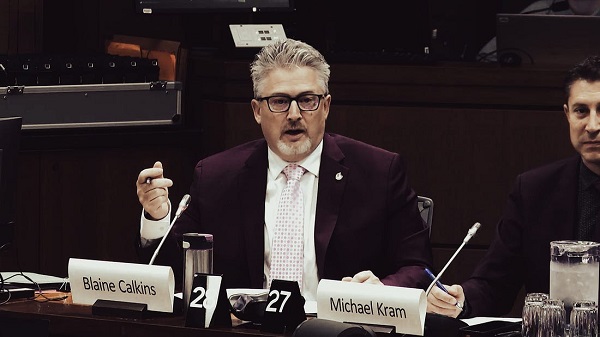
 National1 day ago
National1 day agoElection Officials Warn MPs: Canada’s Ballot System Is Being Exploited
-
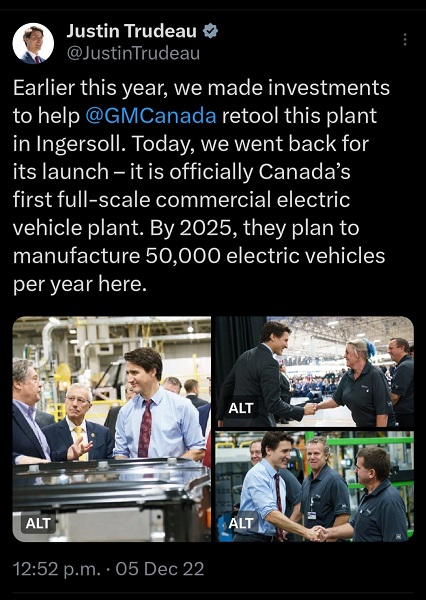
 Business1 day ago
Business1 day agoPaying for Trudeau’s EV Gamble: Ottawa Bought Jobs That Disappeared
-

 Bruce Dowbiggin1 day ago
Bruce Dowbiggin1 day agoIs Roundball A Square Game? Sports Betting Takes Another Hit
-

 Alberta1 day ago
Alberta1 day agoCoutts border officers seize 77 KG of cocaine in commercial truck entering Canada – Street value of $7 Million










